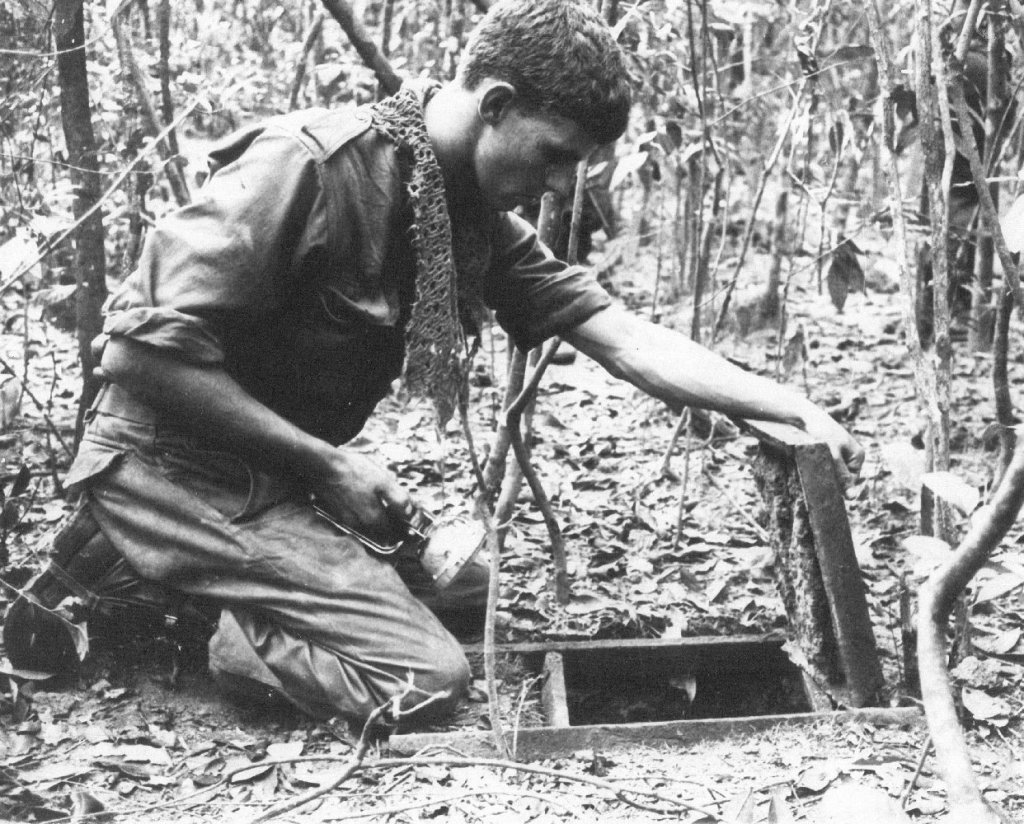The communist forces of Vietnam were largely successful, and for a lot of reasons. They were willing to undergo extreme discomfort and suffer extreme losses for their cause, they were resourceful, and they became more disciplined and well-trained over time. But there was a nightmare infrastructure that they created that also led to success: Those terrifying tunnels.
The fighting in Vietnam dated back to the 1940s when corrupt democratic officials turned the population largely against it. Communist forces preyed upon this, rallying support from the local population and building a guerrilla army, recruiting heavily from farming villages.
The ruling democratic regime patrolled mostly on the large roads and through cities because their heavy vehicles had trouble penetrating the jungles or making it up mountains.
By the time the U.S. deployed troops to directly intervene, regime forces had been overrun in multiple locations and had a firm foothold across large patches of the jungle, hills, and villages.

And while U.S. forces were establishing a foothold and then hunting down Viet Cong elements, the Viet Cong were digging literally hundreds of miles of tunnels that they could use to safely store supplies, move across the battlefield in secret, and even stage ambushes against U.S. troops.
The original Viet Cong tunnels were dug just after World War II as Vietnamese fighters attempted to throw off French colonial authority. But the tunnel digging exploded when the U.S. arrived and implemented a heavy campaign of airstrikes, making underground tunnels a much safer way to travel.
And with the increased size of the tunnel network, new amenities were added. Kitchens, living quarters, even weapon factories and hospitals were moved underground. The Viet Cong now had entire underground cities with hidden entrances. When the infantry came knocking, the tunnels were a defender’s dream.
The tight tunnels limited the use of most American weapons. These things were often dug just tall and wide enough for Viet Cong fighters, generally smaller than the average U.S. infantryman, to crawl through. When corn-fed Nebraskans tried to crawl through it, they were typically limited to pistols and knives.
Even worse for the Americans, the Viet Cong were great at building traps across the battlefield and in the tunnels. Poisoned bamboo shoots, nails, razor blades, and explosives could all greet an attacker moving too brashly through the tunnel networks.
This led to the reluctant rise of the “Tunnel Rats,” American warfighters who specialized in the terrible tasks of moving through the underground bases, collecting intelligence and eliminating resistance. Between the claustrophobia and the physical dangers, this could drive the Tunnel Rats insane.

Once a tunnel was cleared, it could be eliminated with the use of fire or C4. Collapsing a tunnel did eliminate that problem, and it usually stayed closed.
But, again, there were hundreds of miles of tunnels, and most of them were nearly impossible to find. Meanwhile, many tunnel networks had hidden chambers and pathways within them. So, even if you found a tunnel network and began to destroy it, there was always a chance that you missed a branch or two and the insurgents will keep using the rest of it after you leave.
And the tunnels even existed near some major cities. Attacks on Saigon were launched from the Cu Chi Tunnels complex. When U.S. and South Vietnamese troops went to clear them, they faced all the typical traps as well as boxes of poisonous snakes and scorpions.
And the clearance operation wasn’t successful in finding and eliminating the bulk of the tunnels. The Cu Chi Tunnels were the ones used as staging points a weapons caches for the Tet Offensive.
Feature image: National Archives


